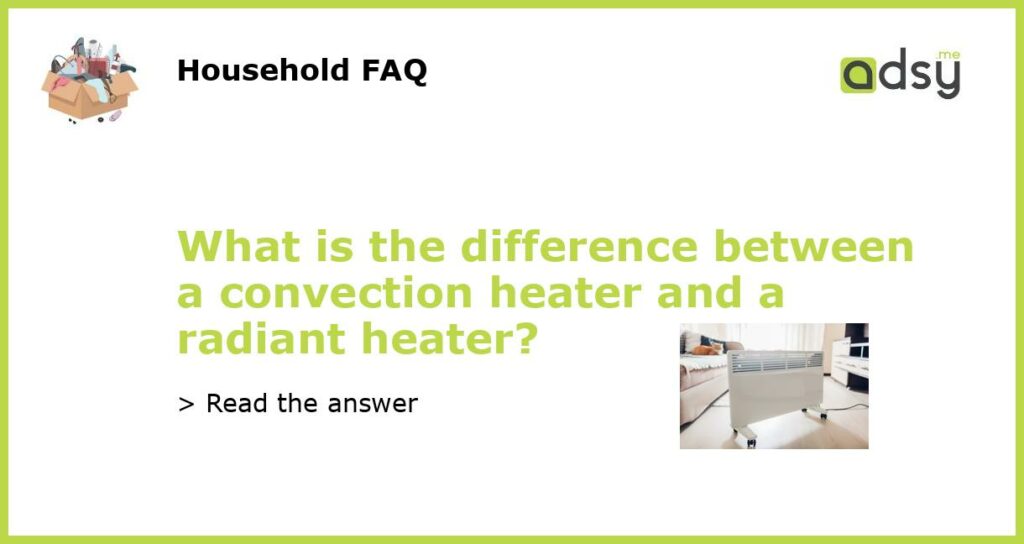Convection Heater vs Radiant Heater: Understanding the Difference
Heating options for your home or office come in various forms, and it’s important to understand the different types of heaters available. Two popular options are convection heaters and radiant heaters.
How Does a Convection Heater Work?
A convection heater operates by creating warm air currents that circulate throughout a room. These heaters feature a heating element, usually made of metal, that warms up when electricity or other fuel sources are used. As the heating element warms up, it transfers heat to the surrounding air, causing it to rise. The warm air then circulates throughout the room, gradually heating the space.
Convection heaters typically come with a fan that helps distribute the warm air more efficiently. The fan speeds up the convection process, enabling the heater to heat up a room faster than a non-fan convection heater.
What is a Radiant Heater?
A radiant heater, on the other hand, uses infrared radiation to heat objects and people directly. Instead of relying on warm air currents to transfer heat, radiant heaters emit infrared radiation that travels in a straight line and heats up any object it comes into contact with.
Radiant heaters are generally more focused and provide spot heating, meaning they primarily heat up the objects and people in their direct line of sight. These heaters are ideal for heating specific areas within a larger space or for providing targeted heat to individuals.
Heating Efficiency and Energy Consumption
When it comes to heating efficiency, both convection heaters and radiant heaters have their pros and cons.
Convection heaters are known for their ability to heat up large spaces relatively quickly, thanks to the circulating air currents. However, they can be less energy-efficient since they need to continuously heat the air as it cools down. This constant heating process can lead to energy wastage.
Radiant heaters, on the other hand, provide direct heat to objects and people. Since they don’t rely on warming the air within a space, radiant heaters tend to be more energy-efficient. They can also provide almost instantaneous heat, making them a great option for quick spot heating.
Safety Considerations
When it comes to safety, both convection and radiant heaters have their own considerations.
Convection heaters, although generally safe to use, can pose a fire hazard if they come into contact with flammable objects or if the heating element overheats. It is important to maintain a safe distance between the heater and any potential hazards.
On the other hand, radiant heaters are considered safer since they don’t have exposed heating elements. However, it’s important to keep flammable materials away from the heater’s direct line of sight to prevent any potential fire hazards.
Choosing the Right Heater for Your Needs
When deciding between a convection heater and a radiant heater, consider the specific needs of your space and your heating preferences.
A convection heater is ideal for heating larger areas and achieving an overall temperature increase. If you need to heat up an entire room or an open space, a convection heater with a fan may be the best option. However, keep in mind that they may not be as energy-efficient as radiant heaters.
Radiant heaters, on the other hand, are perfect for spot heating or providing direct warmth to individuals. If you want targeted heat in specific areas or require quick heating, a radiant heater is a great choice. They are generally more energy-efficient and provide instant heat.
Ultimately, the choice between a convection heater and a radiant heater depends on your specific heating requirements and preferences. Consider the size of the space you need to heat, the level of energy efficiency you desire, and the safety considerations for your intended heater location. By understanding the differences between these two types of heaters, you can make an informed decision that suits your heating needs.






